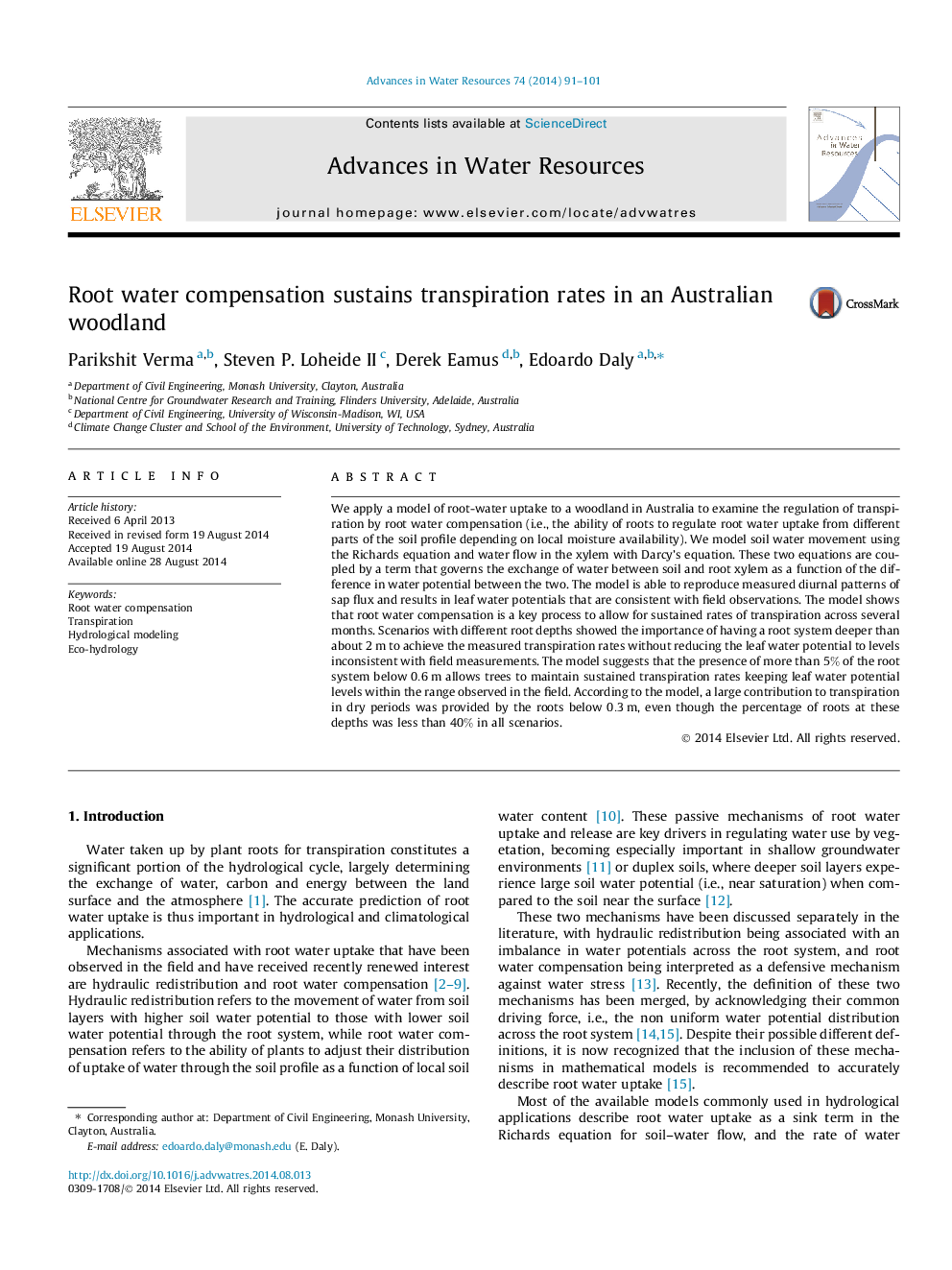| Article ID | Journal | Published Year | Pages | File Type |
|---|---|---|---|---|
| 6381038 | Advances in Water Resources | 2014 | 11 Pages |
Abstract
We apply a model of root-water uptake to a woodland in Australia to examine the regulation of transpiration by root water compensation (i.e., the ability of roots to regulate root water uptake from different parts of the soil profile depending on local moisture availability). We model soil water movement using the Richards equation and water flow in the xylem with Darcy's equation. These two equations are coupled by a term that governs the exchange of water between soil and root xylem as a function of the difference in water potential between the two. The model is able to reproduce measured diurnal patterns of sap flux and results in leaf water potentials that are consistent with field observations. The model shows that root water compensation is a key process to allow for sustained rates of transpiration across several months. Scenarios with different root depths showed the importance of having a root system deeper than about 2Â m to achieve the measured transpiration rates without reducing the leaf water potential to levels inconsistent with field measurements. The model suggests that the presence of more than 5% of the root system below 0.6Â m allows trees to maintain sustained transpiration rates keeping leaf water potential levels within the range observed in the field. According to the model, a large contribution to transpiration in dry periods was provided by the roots below 0.3Â m, even though the percentage of roots at these depths was less than 40% in all scenarios.
Related Topics
Physical Sciences and Engineering
Earth and Planetary Sciences
Earth-Surface Processes
Authors
Parikshit Verma, Steven P. II, Derek Eamus, Edoardo Daly,
